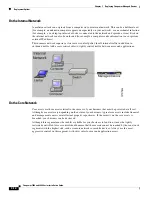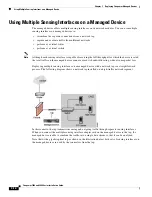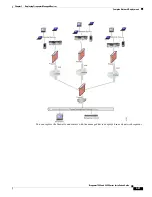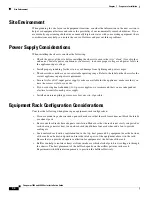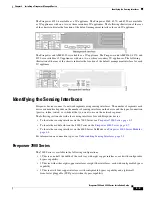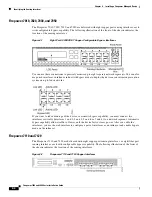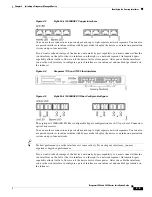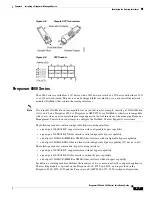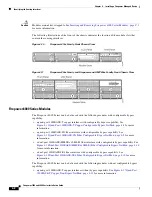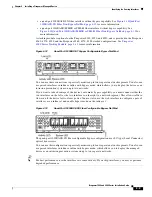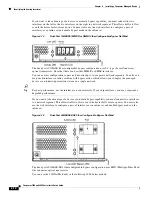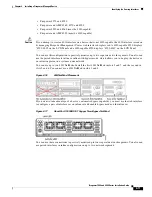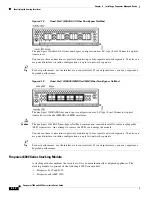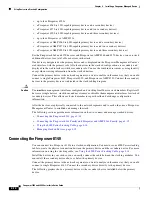
7-4
Firepower 7000 and 8000 Series Installation Guide
Chapter 7 Prepare to Installation
Site Environment
Site Environment
When planning the site layout and equipment locations, consider the information in the next section to
help avoid equipment failures and reduce the possibility of environmentally caused shutdowns. If you
are currently experiencing shutdowns or unusually high error rates with your existing equipment, these
considerations may help you isolate the cause of failures and prevent future problems.
Power Supply Considerations
When installing the chassis, consider the following:
•
Check the power at the site before installing the chassis to ensure that it is “clean” (free of spikes
and noise). Install a power conditioner, if necessary, to ensure proper voltages and power levels in
the appliance-input voltage.
•
Install proper grounding for the site to avoid damage from lightning and power surges.
•
The chassis does not have a user-selectable operating range. Refer to the label on the chassis for the
correct appliance input-power requirement.
•
Several styles of AC-input power supply cords are available for the appliance; make sure that you
have the correct style for your site.
•
If you are using dual redundant (1+1) power supplies, we recommend that you use independent
electrical circuits for each power supply.
•
Install an uninterruptible power source for your site, if possible.
Equipment Rack Configuration Considerations
Consider the following when planning an equipment-rack configuration:
•
If you are mounting a chassis in an open rack, make sure that the rack frame does not block the intake
or exhaust ports.
•
Be sure enclosed racks have adequate ventilation. Make sure that the rack is not overly congested as
each chassis generates heat. An enclosed rack should have louvered sides and a fan to provide
cooling air.
•
In an enclosed rack with a ventilation fan in the top, heat generated by equipment near the bottom
of the rack can be drawn upward and into the intake ports of the equipment above it in the rack.
Ensure that you provide adequate ventilation for equipment at the bottom of the rack.
•
Baffles can help to isolate exhaust air from intake air, which also helps to draw cooling air through
the chassis. The best placement of the baffles depends on the airflow patterns in the rack.
Experiment with different arrangements to position the baffles effectively.

